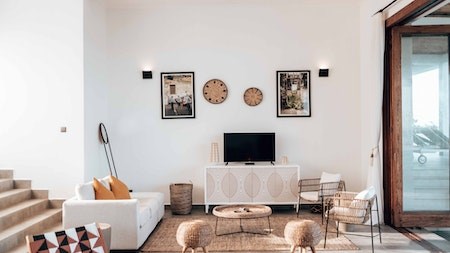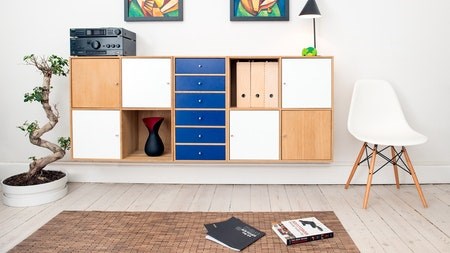Most people have a collection of items stashed somewhere out of sight, no longer in use but too precious to throw away.
Clothing, uniforms, beddings and other favourite things like cushion covers, hankies, tea towels, doilies, neckties and soft toys may have had their day. However, you may not yet be ready to part with them. These could be keepsakes from you or your children's baby, school, or university years; precious memories of a loved one; collections of special interest theme items; or mementoes of holidays or special occasions.
Instead of stowing these items, why not use them to create a quilted story to be enjoyed every day? The quilt can be any size, from a scatter cushion or wall-hanging to a large quilt, and in any style from traditional patchwork to quilt art.
Story quilts are a fun way to personalise your home, adding colour and character that will not be found elsewhere.
Styles
A quilt doesn't have to be a floral quilt like your grandmother used to make, although those are pretty too. Instead, you can adapt all of the traditional quilting techniques to create a modern look very different to what you might think patchwork looks like.
You can patchwork anything - T-shirts, sports gear, branded clothing, zips, pockets, zips, cuffs, button tabs, epaulettes, or even full baby clothes. It's a great way of using leftover pieces of fabric from denim to silk or scraps from a bridal boutique – and clear much-needed cupboard space.
Your collection of items will determine the style of article you choose for your quilted memory, says Angie Urban of Stories by Quilt, who makes customised story quilts to order.
“We make all things quilted really - wall hangings, table coverings that are made to fit your table, cushion covers and quilts in nearly all sizes.”
History
Quilts have been a narrative part of many cultures and were traditionally made by hand.
Groups of friends and neighbours would often gather together to work on one quilt. This significantly reduced the amount of time it would take one person to make the quilt, and these quilting bees became important social gatherings.
From the choice of materials to the design and pattern, these quilts tell stories about the period in which they were made and the people who made them.
One popular example is the friendship quilt, made by friends as a gift of remembrance. They were made for friends or relatives to commemorate a wedding or a new baby and were sometimes given to friends who moved away.
A friendship quilt comprises different squares, each signed by one of the friends and quilters. They could include the date or a personal message, much like modern scrapbooks.
A popular modern-day quilt is the memorial quilt, designed to commemorate lives, increase awareness and raise money for a cause.
A well-known example of a memorial quilt is the AIDS Memorial Quilt in San Francisco - the world’s largest piece of community folk art. It was made in 1987 and consists of 40 000 panels, each representing the life of a person who died from AIDS. Another famous memorial quilt is the World Trade Centre Memorial Quilt in New York.
Decor
Quilts were traditionally used to keep warm on a cold night, so they are very much at home on your beds. However, if you prefer the warmth of a comforter or a duvet, a quilt used as a throw at the foot of your bed will add colour and texture to your bedroom space.
Your living room and TV room also lend themselves to incorporating a quilt. Fold it loosely and drape it over the back of the couch - the room will seem more inviting, and the quilt will be easily accessible when you need it.
Displaying quilts on walls has become a popular décor choice in the last few years. It enables you to enjoy more elaborate or delicate quilts without fear of ruining them.
- Frame the quilt and display it on the wall. The choice of the frame will depend on the style of the quilt.
- Hang a curtain rail, and then suspend your quilt from it.
Quilted tablecloths and runners are colourful and eye-catching. If you’re worried about making a mess, use them on tables where you don’t often eat, or take the quilt off before you sit down.
Scatter cushions with quilted exteriors add character and colour.
- Choose a quilting pattern that has a major colour in common with the rest of the room. For instance, if the room is pale pink, a quilt with a darker pink backing and frame would work well.
- Hang colourful or highly patterned quilts in minimalist-style rooms, and use simple quilts in busier rooms.
- Place multi-coloured or patterned quilts on non-patterned furniture and the other way around.
- Quilts and scatter cushions in the same pattern and similar colours will tie a design together.
Monochrome quilts in neutral colours like white or cream will complement almost any space.
You can repurpose your collection of items to brighten and personalise your living space by following the guidelines listed above.
Writer : Sarah-Jane Meyer





